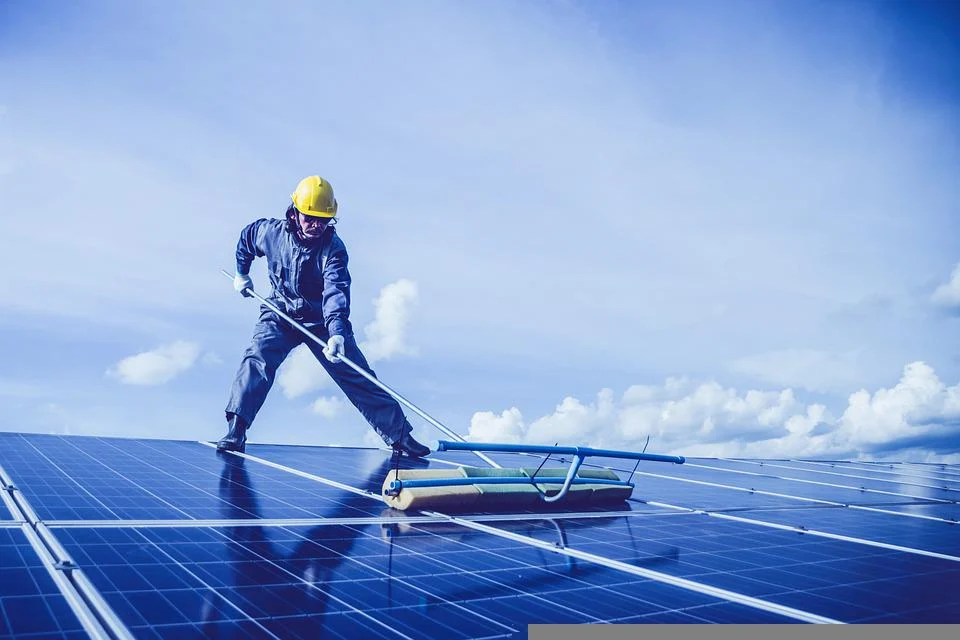Different ruling parties may have taken radically different approaches to environmental issues, energy policy and job creation than the previous government. In this article, we take a quick look at what has happened, the changes we see happening in the coming months and years, and the impact of those changes on solar.
Policy changes
Environmental commitment
As promised during his campaign, President Biden signed an executive order to have the United States rejoin the Paris climate agreement as one of his first acts in office. The Paris Agreement is one of the most extensive international efforts to curb global warming and signifies a commitment from the administration to seek renewable means of energy production as a way to help curb climate change.
Build Back Better
President Biden’s economic recovery plan, called Build Back Better, is a multi-faceted plan that covers a wide range of industries, including:
- Infrastructure: Create millions of stable jobs, rebuilding America’s infrastructure—from roads and bridges to green spaces and water systems to electricity grids and universal broadband.
- Auto Industry: Create 1 million new jobs in the American auto industry, domestic auto supply chains, and auto infrastructure, from parts and materials to electric vehicle charging stations.
Transit: Provide every sizable major metropolitan area high-quality, zero-emissions public transportation ranging from light rail networks to improving existing pedestrian, bike, and transit infrastructure.
- Power Sector: Generate clean, American-made electricity to achieve a carbon pollution-free power sector by 2035.
- Buildings: Upgrade 4 million facilities and weatherize 2 million homes over four years, creating at least 1 million good-paying jobs.
- Housing: Spur the construction of 1.5 million sustainable homes and housing units.
- Innovation: Drive dramatic cost reductions in critical clean energy technologies, including battery storage and negative emissions technologies, while ensuring that those new technologies are made in America.
- Agriculture and Conservation: Create jobs in climate-smart agriculture, resilience, and conservation.
Within this plan, there is $7.3 trillion in green infrastructure investments with the primary goal of creating 10 million clean-energy jobs and reducing U.S. carbon emissions. There will be implications for renewable energy as a whole and for solar in particular to meet these aggressive goals.
Look for both federal and state governments to scale up their current clean energy standards for utilities and grid operators. These energy standards are proven to help increase clean energy production and produce quality jobs through innovative financing mechanisms that leverage private sector dollars to maximize clean energy investment.
Predicting the impact
Electric powered everything
As consumers start seeing electric vehicles, from scooters to trucks, as “normal,” many industry leaders are doubling down on their investment in electric-powered technology. Automotive giant General Motors announced that it is on its way to an all-electric future, with a commitment to 30 new global electric vehicles by 2025. Similarly, utilities like Reliant electric company are shifting their focus to cleaner and renewable sources of energy to support the push towards a sustainable future. This trend is likely to continue and begin to shape the way consumers think about the source of the fuel they are using to power their new vehicle. Second, many RVs will also purchase solar battery and solar generators as backup energy systems.
Extended tax credits
The Investment Tax Credit (ITC), also known as the federal solar tax credit,was set to expire in 2007 but has been extended multiple times, including most recently in December 2020 for two additional years. It’s unlikely that Congress will further reduce the ITC from its current
26% tax credit. Still, an even further extension of this credit will likely be implemented as a part of the new administration’s goal of stimulating the economy and creating clean, renewable energy.
Extended energy standards
Look for both federal and state governments to scale up their current clean energy standards for
utilities and grid operators. These energy standards are proven to help increase clean energy production and produce quality jobs through innovative financing mechanisms
that leverage private sector dollars to maximize clean energy investment.
Solar carve-outs
In addition to the further expansion of technology-neutral energy standards, many states will add technologyspecific mandates as a part of their renewable energy policies. One such policy mechanism is a solar carveout. Carve-outs require a certain percent of the utility’s power to come from a specific renewable energy source—such as solar—resulting in many utilities offering added incentives to consumers who install qualifying solar systems.
Nationwide renewable
energy adoption
The extension of the ITC and extended energy standards will spark greater adoption of renewable energy—including utility-scale, rooftop, community solar systems and large scale solar farms in rural communities, as well as tens of thousands of wind turbines—across the country and off our coasts.
A solar boom
Although other renewable energy sources, such as wind, may provide more significant production potential, solar’s unique ability to provide small-scale yet efficient renewable energy at an attainable price point makes it the clear favorite to see the most significant growth in the coming years. We regularly experience power outages caused by severe extreme weather, and many people are considering solar generators in their homes.
Challenges with supply & demand
As policy changes become more aggressive and the demand for solar increases, there is a real likelihood that we will see a shortage of qualified installers to meet that demand in many markets. This shortage will mean there will be opportunities for those looking for employment in the renewable energy field. Yet, it may delay the process for a consumer looking to find a quality
installer who can meet their desired timeframe. Additionally, the increase in demand is likely to put some strain on manufacturing, which could mean those who wait too long may have to pay higher prices for the products and materials they need for their installation.
An increase in domestic manufacturing
While U.S. manufacturing has been down in recent years, solar has been one of the few sectors where domestic manufacturing is growing. In fact, the global demand for solar is growing so rapidly that it’s placing added strain on the solar-technology supply-chain. As a result, we are
likely to see a significant increase in the number of solar panel sales produced here in the U.S. to meet that demand.
Capitalizing on these new policies
Talk to a solar expert
To take advantage of these policies, first talk to a couple of qualified installers. They should be able to help you determine if you have a viable site for solar and, if so, what that might potentially look like. They should also be able to talk to you about the cost and savings associated with your project and provide you with any added information about any incentives or programs you may qualify for, so you can make a thoughtful and informed decision.
Contact Renogy to learn more about how you might benefit from some of the new administration’s policies by installing your own solar photovoltaic system today. Renogy is headquartered in Ontario, CA, Local teams support installations in many surrounding areas. We have helped thousands of property owners control their energy costs with solar electricity.
Now installing a brighter, cleaner future
Renogy is a trusted leader in the solar energy industry. We provide clean, green, solar
energy solutions for residential, commercial, agricultural, and government clients. Our team of industry professionals have been focused on providing long term, trusted relationships since 2011. Our industry experience allows us to confidently handle every aspect of the solar process. From initial energy analysis and concepts, engineering and design, construction, and monitoring, our team prides itself on being experts in all aspects in our field.





